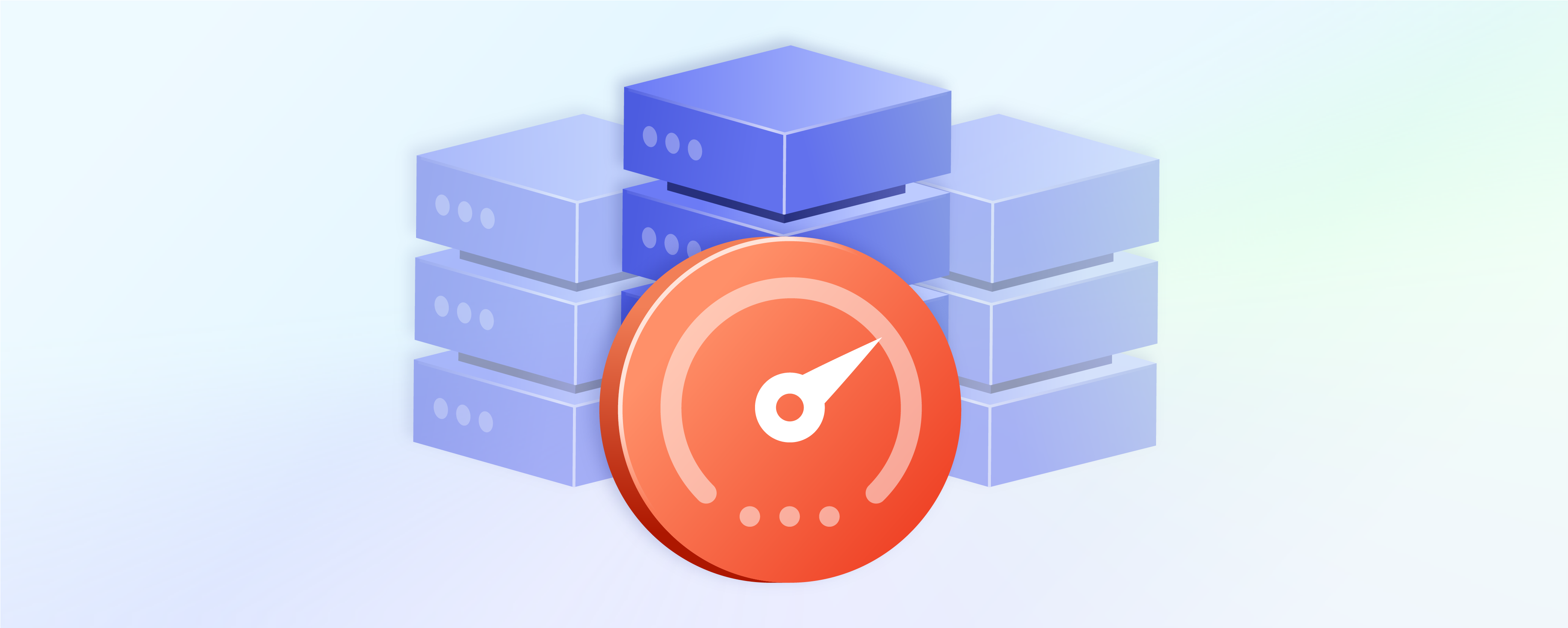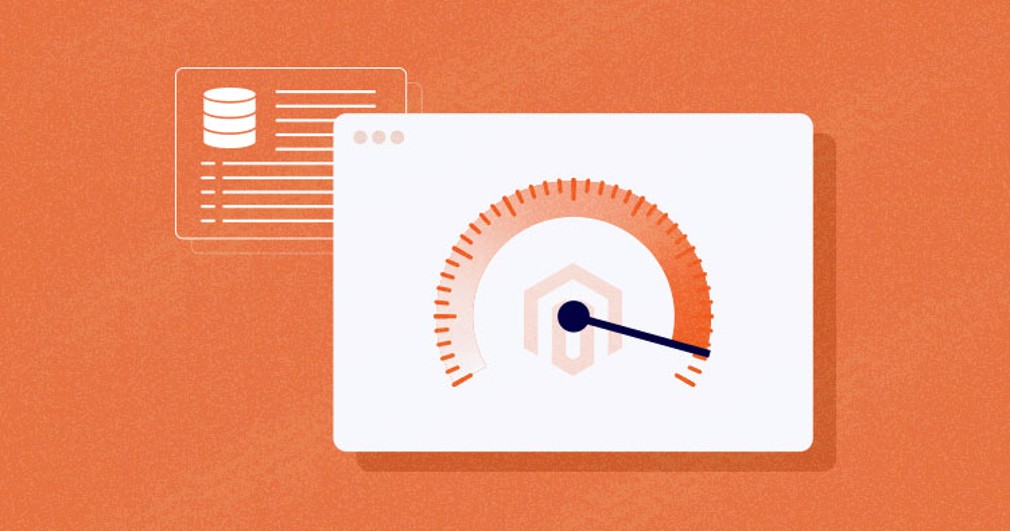The speed of your online store is a critical factor that can make or break the user experience and significantly impact your sales and search engine rankings. Magento, a leading open-source eCommerce platform, is the backbone of numerous online stores, known for its robust features and flexibility. However, many users encounter a common issue — sluggish performance.
This article delves into the various factors contributing to why Magento is so slow and how to solve it. From optimizing server and hosting environments to regular updates and maintenance, we explore practical solutions to enhance your Magento store’s speed, ensuring a swift, seamless shopping experience for your customers.
Table of Contents
How to Understand That Your Magento 2 Store Speed is Slow
Understanding the speed of your Magento 2 store is crucial in maintaining optimal performance and ensuring a positive user experience. A slow-loading site can lead to increased bounce rates, decreased customer satisfaction, and ultimately, reduced conversions and sales.

Here’s how you can determine if your Magento slow loading:
Monitor User Feedback
One of the most direct ways to gauge your store’s performance is through user feedback. Pay attention to customer complaints about slow loading times or poor performance. If users are consistently reporting issues, it’s a strong indicator that your store might be running slower than it should.
Self-Observe and Test
Regularly navigate through your website as if you are a customer. Take note of the loading times of pages, how quickly images and content load, and the responsiveness of interactive elements. Try this during different times of the day and from various devices and internet connections to get a comprehensive view.
Utilize Speed Testing Tools
Various tools can provide a quantitative analysis of your site speed:
- Google PageSpeed Insights: This tool evaluates the content of a web page and generates suggestions for improvement. It provides a performance score and details about key metrics like First Contentful Paint (FCP) and Largest Contentful Paint (LCP), which are crucial for understanding loading times.
- GTmetrix: It combines the performance scores from Google PageSpeed and YSlow to assess your site’s speed and provides actionable recommendations for improvement.
- Pingdom: Known for its ease of use and detailed reports, Pingdom assesses your site’s speed and performance while providing insights into factors that might be slowing it down.
- WebPageTest: This tool offers detailed performance reports and allows you to test from different locations and browsers, providing a comprehensive view of your site’s speed across various scenarios.
Analyze Performance Metrics
Delve into specific metrics that indicate your site’s speed:
- Page Load Time: The total time it takes for a page to fully display.
- Time to First Byte (TTFB): The duration from the user’s navigation to the receipt of the first byte of page content.
- Start Render Time: How long it takes for something to appear on the screen after a user navigates to your page.
- Cumulative Layout Shift (CLS): This metric assesses the stability of your site, indicating if elements shift unexpectedly while the page is loading.
Magento Slow: Why Magento 2 is So Slow?
Server and Hosting Environment
The server and hosting environment are the reasons why Magento 2 is slow. If you’re experiencing Magento 2 slow loading, several factors related to your server and hosting setup might be contributing to the issue.

Here’s a detailed look at why the server and hosting environment can cause Magento to run slowly:
Inadequate Server Resources
Magento is a resource-intensive platform that requires a good amount of RAM, CPU power, and disk space to run smoothly. If your server is underpowered or if you’re on a shared hosting plan where resources are spread thin among many users, your Magento store might not have enough resources to perform optimally. This can lead to Magento slow processing times and increased load times for your pages.
Poorly Configured Servers
Magento has specific server requirements and recommended configurations for optimal performance. If your server is not correctly configured to meet these requirements, it could negatively impact the speed of your Magento store. This includes settings for PHP, MySQL, and web servers like Apache or Nginx. Inappropriate configurations can lead to bottlenecks and Magento slow performance.
Unoptimized Themes and Extensions
Themes and extensions are vital components of any Magento store, offering the necessary customization and functionality to meet diverse business needs. Themes, particularly, are responsible for the visual appeal and layout of the store, enhancing the user experience and branding. However, not all themes are created equal. Some are laden with poor coding practices and excessive features, leading to Magento slow. These themes often require more processing power and increase load times due to inefficient code structures and unoptimized images and assets. The result is a visually appealing site that, unfortunately, performs sluggishly and frustrates users with slow loading times.

Extensions, on the other hand, extend the capabilities of your Magento store, adding valuable features and functionalities that can set your store apart. While these tools are powerful, their misuse or overuse can significantly make the Magento site very slow. Installing too many extensions, or opting for ones that are poorly developed, can lead to increased load times as each additional extension adds more code for the browser to load and execute. Moreover, poorly developed extensions often run inefficient database queries or conflict with other installed extensions or themes, further slowing down the store and potentially leading to functional errors.
Large Database and Unoptimized Queries
A large database and unoptimized queries are common issues causing Magento 2 very slow. As a Magento store expands, so does its database. Each new product, customer, and transaction adds more data to the system. Over time, this can result in a massive database with a complex structure. While having a large amount of data is a sign of growth, it can also pose performance challenges. The larger the database, the longer it can take to retrieve and manipulate the data. This is especially problematic for operations that are performed frequently, like product searches or inventory updates, which can become increasingly slow as the database grows. Moreover, Magento stores often accumulate vast amounts of log data, which, if not regularly purged, can contribute to database bloat and further degrade performance.
Unoptimized queries compound the issues caused by a large database. Queries are instructions sent to the database to perform operations like retrieving specific data or updating records. Well-optimized queries can be executed quickly and efficiently, even on a large database. However, poorly optimized queries can be extremely inefficient, unnecessarily scanning large portions of the database and significantly slowing down response times. This is particularly true for complex operations common in Magento stores, such as searching for products with specific attributes or calculating prices with various discounts and taxes applied.

Inefficient queries can also lead to database locking, where multiple operations are trying to access the same data simultaneously, causing delays and Magento slow. Additionally, when these queries are not properly indexed, the database must perform full table scans, a resource-intensive process, especially with larger data sets. This not only slows down the query itself but can also impact the overall performance of the store as system resources are diverted to handle these inefficient operations.
Inadequate Caching and Content Delivery Network (CDN) Usage
Inadequate caching and insufficient use of a Content Delivery Network are significant factors contributing to Magento slow loading. These technologies are designed to enhance the speed and efficiency of content delivery on websites, and when they’re not utilized or configured correctly, the performance and user experience of a Magento store can suffer dramatically.
Caching is a process that stores copies of files in a temporary storage location so they can be accessed more quickly. Magento offers several layers of caching to speed up load times and reduce the load on the server by preventing the need to regenerate the same content for every visit. When caching is inadequate or misconfigured, Magento must rebuild pages from the ground up for each request, which is a resource-intensive process that can significantly affect Magento slow.

Without proper full-page caching, the server must process more PHP scripts and database queries for each page load, increasing the response time for users. Other types of caching, like block caching and browser caching, are also crucial. Block caching helps speed up the load times of individual blocks of content on a page, and browser caching allows users’ browsers to store certain elements locally, reducing the amount of data that needs to be transferred on subsequent visits. Inadequate caching means these benefits are not fully realized, leading to unnecessary delays and sluggish site performance.
Moreover, CDN is a network of servers distributed geographically that work together to provide fast delivery of Internet content. A CDN allows for the quick transfer of assets needed for loading content including HTML pages, javascript files, stylesheets, images, and videos. For global or widely dispersed audiences, the physical distance between the server and the user can significantly affect content loading times. Without a CDN, all users, regardless of their location, must access the same central server, which can result in Magento slow loading times, particularly for users who are far away.
Outdated Magento Version
Running an outdated version of Magento can significantly contribute to the sluggishness of your online store. As technology evolves, so do the strategies and methods for optimizing performance, security, and functionality. Regular updates are released for platforms like Magento to address these aspects, and not keeping up with these updates can leave your store lagging in several critical areas.

With each new release, Magento introduces various performance improvements. These enhancements often come in the form of optimized code, more efficient database queries, and better caching techniques. Updates may also include adjustments that allow Magento to better utilize server resources or integrate more effectively with other technologies and services, such as PHP, databases, and web servers. Running an outdated version means you’re missing out on these optimizations, which can lead to Magento 2 slow page load times, longer transaction processes, and generally sluggish performance.
Furthermore, security is a critical aspect of maintaining a healthy and fast Magento site. Older versions of Magento may have known vulnerabilities that have been addressed in later versions. These vulnerabilities can not only compromise the security of your store but can also impact performance. For instance, a security breach could lead to unauthorized scripts running on your site, consuming resources and slowing down your store for legitimate users. Additionally, search engines may penalize or blacklist sites with known security issues, impacting your traffic and SEO.
How to Solve It: Solutions to Improve Magento’s Speed
Optimizing Server and Hosting Environment
Optimizing the server and hosting environment is a critical strategy to improve the situation of Magento slow speed and overall performance. This involves a series of steps and considerations aimed at creating the most efficient, responsive, and stable platform for your Magento store to operate on. When the server and hosting environment are fully optimized, Magento can deliver its best performance, resulting in faster load times, smoother transactions, and a better user experience.
Choosing the Right Hosting
The foundation of a well-optimized server environment is choosing a hosting provider that specializes in Magento. These providers understand the unique needs of Magento’s architecture and can offer optimized environments, advanced caching, and the ability to handle sudden surges in traffic. They can also provide valuable Magento-specific support.

Whether it’s shared hosting, a virtual private server (VPS), dedicated servers, or cloud solutions, the key is to choose a plan that fits your store’s size and traffic. Always plan for scalability so that as your store grows, your server can handle the increased load.
Resource Allocation
Magento requires substantial resources to run smoothly, particularly RAM and CPU. Ensure your server has enough of these resources allocated to handle your store’s demands, especially during peak traffic periods. Insufficient resources can lead to Magento slow loading times and even downtime. Additionally, SSD (Solid State Drives) should be used over HDD (Hard Disk Drives) for faster disk read/write speeds, which is crucial for database and page caching operations.
Server Configuration
A server that’s optimally configured for Magento can significantly boost performance. This means configuring the web server (like Apache or Nginx) with the right settings for handling connections and optimizing PHP for performance. This includes using the latest PHP version supported by your Magento version, implementing opcode caching, and adjusting memory limits and execution times. The database is another critical component; ensuring it’s well-optimized with regular maintenance, query optimizations, and appropriate indexing can prevent it from becoming a bottleneck.
Selecting and Customizing Themes and Extensions Wisely
Selecting and customizing themes and extensions wisely is a crucial strategy in improving the speed and overall performance of a Magento store. The right theme can provide a solid foundation for your store’s design and user experience, while the right extensions can add valuable features and functionalities. However, if chosen or managed poorly, themes and extensions can significantly slow down your site.
Choosing the Right Themes
The theme of your Magento store is essentially its front-end template — it controls how your store looks and feels to the customer. While aesthetics are important, the theme’s impact on performance is equally critical. A theme laden with heavy graphics, complex animations, or inefficient code can drastically slow down your site.

When selecting a theme, look for one that is well-coded and optimized for performance. It should be responsive, ensuring fast loading times across all device types, and should not include any unnecessary features that you won’t use but that can slow down your site. Always test the theme in a staging environment to assess its impact on performance before going live.
Managing Extensions Wisely
Extensions add functionality to your Magento store, but each installed extension adds to the complexity and can impact the site’s load time. Before adding an extension, evaluate if the functionality it provides is essential and if the same result can be achieved with existing features or simpler customizations. When choosing extensions, opt for those with good reviews, strong support, and a track record for performance. Keep in mind that more extensions mean more code to process, more potential conflicts, and more maintenance. Regularly review your installed extensions and remove any that are no longer needed or that duplicate functionality.
Customization for Performance
Customizing your theme and extensions can also impact performance. Customizations should always be done with a mind towards efficiency and speed. This means optimizing images, minifying CSS and JavaScript files, and removing any unused features or code. Ensure that any custom development is done following Magento coding standards and best practices to avoid introducing inefficient code or potential conflicts.
Database Optimization Techniques
Database optimization is a critical aspect of improving Magento’s speed and overall performance. As the backbone of your eCommerce platform, the database holds product information, customer details, order histories, and more. Over time, as transactions increase and the store grows, the database can become large and unwieldy, potentially slowing down your site. Implementing database optimization techniques can significantly enhance the responsiveness and speed of your Magento store.
Regular Cleaning and Maintenance
One of the simplest yet most effective database optimization techniques is regular cleaning and maintenance. Over time, Magento databases can accumulate unnecessary data, such as old logs, expired quotes, and outdated product revisions. This data can bloat the database and slow down query processing times.

Regularly cleaning up this data can keep the database lean and efficient. Magento includes some built-in tools for log cleaning, but you may also need to perform additional manual cleaning or set up custom scripts for more comprehensive maintenance.
Indexing for Efficiency
Proper indexing is crucial for efficient data retrieval. An index allows the database to find and retrieve specific data much more quickly than scanning every row in a table. However, excessive or improper indexing can degrade performance by slowing down write operations. It’s essential to analyze your database and implement indexing that optimizes the balance between read and write operations. This typically involves creating indexes on columns that are frequently used in search queries or as sorting parameters. Regularly reviewing and updating your indexing strategy as your store evolves is also important.
Optimizing Queries
The way data is retrieved from the database — the queries — can significantly impact performance. Inefficient queries can strain the database and slow down response times. Optimizing queries often involves simplifying complex queries, reducing the number of database calls, and ensuring that queries are written in a way that takes advantage of indexing. Tools like the Magento Database Profiler can help identify slow or inefficient queries. Once identified, these queries can often be optimized by restructuring them, adding appropriate indexes, or even caching the results.
Implementing Effective Caching and CDN
Implementing effective caching and utilizing a Content Delivery Network (CDN) are among the most impactful solutions for enhancing the speed of a Magento store.
Effective Caching
Caching is a technique that stores copies of files or pieces of data in temporary storage for quick access upon request. In the context of Magento, effective caching can drastically reduce the time it takes to load pages, thereby enhancing the user experience and improving site performance.

- Full-Page Caching: Magento comes with a built-in full-page caching feature, which stores the entire HTML output of a page. When a user requests the page, Magento serves this cached version instead of dynamically generating it again, significantly reducing load times. Ensuring full-page caching is correctly configured and utilized is fundamental for any Magento store.
- Block-Level Caching: In addition to full-page caching, Magento allows for more granular caching at the block level. This means individual blocks or components of a page (like product listings or banners) can be cached independently. This is particularly useful for pages that contain both dynamic and static content.
- Browser Caching: Configuring browser caching means instructing users’ browsers to store certain files locally for a specified period. This reduces the number of requests sent to the server and speeds up page loading on subsequent visits.
- Backend Caching Technologies: Implementing backend caching technologies like Redis or Memcached can further enhance Magento’s performance. These technologies can efficiently cache database queries and session data, reducing the load on the database and speeding up user sessions.
Utilizing a CDN
A CDN significantly reduces the time it takes for the data to travel between the server and the user, speeding up load times, especially for users located far from the main server.
- Static Content Delivery: CDNs are particularly effective at serving static content such as images, CSS files, and JavaScript. By caching this content on servers close to the user’s location, a CDN can dramatically reduce load times for these resources.
- Reducing Bandwidth: Utilizing a CDN can also reduce the bandwidth consumed by your server, as much of the content delivery is offloaded to the CDN’s servers. This not only speeds up content delivery but can also reduce hosting costs.
- Scalability and Reliability: CDNs can handle spikes in traffic more gracefully than a single server might, providing a buffer during traffic surges. They also increase the reliability of content delivery, as the network can reroute requests to another server if one is unavailable.
Regular Updates and Maintenance
To solve Magento slow loading, it’s crucial to establish a regular schedule for reviewing and applying updates. Magento frequently releases updates that include performance enhancements, security patches, and new features. These updates are essential for keeping your store running smoothly and securely. Running an outdated version can leave your store vulnerable to known security threats and deprive it of performance optimizations. Setting a regular schedule to check for and implement updates is crucial. It’s also important to test updates in a staging environment before applying them to your live store to ensure they don’t cause disruptions or conflicts.

The server and hosting environment should not be overlooked in regular maintenance routines. This includes updating server software (like PHP, web server, and database software) and regularly reviewing server performance. As your store grows, you may need to adjust your hosting plan or server resources to accommodate increased traffic and data. Implementing server monitoring tools can provide insights into the health and performance of your environment, helping you make informed decisions about necessary adjustments or upgrades.
In conclusion
While Magento is a powerful and versatile eCommerce platform, its performance can be hindered by a variety of factors such as server and hosting configurations, unoptimized themes and extensions, large and inefficient databases, inadequate caching, and not utilizing a CDN. However, as we’ve explored why Magento is so slow and how to solve it. By optimizing your server and hosting environment, selecting and customizing themes and extensions wisely, employing database optimization techniques, implementing effective caching and CDN usage, and adhering to a routine of regular updates and maintenance, you can significantly solve Magento slow situation and enhance the overall performance of your Magento store.
Remember, improving your Magento 2 slow speed is not a one-time fix but an ongoing process of monitoring, tweaking, and updating. Partnering with a professional agency like Magenest can take the weight off your shoulders. With a team of experts dedicated to providing top-notch Magento maintenance services, Magenest can help optimize your store’s performance, enhance security, and ensure a seamless shopping experience for your customers. Don’t let a slow Magento store hinder your business’s potential.











